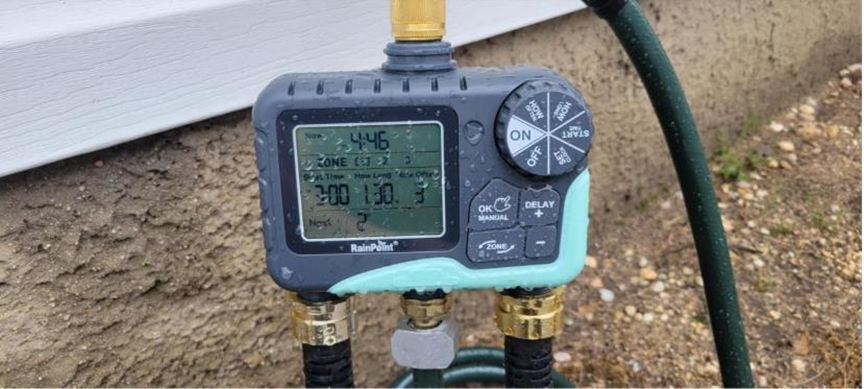A Reliable Upgrade for Precision Irrigation

As a long-time user of RainPoint’s single-zone WiFi timer, I recently transitioned to their 3-zone mechanical timer, and the upgrade has been well worth it. While I initially hesitated about losing WiFi connectivity, the multi-zone customization has proven far more valuable for my diverse garden needs. Here’s a detailed breakdown of my experience:
Key Benefits
Multi-Zone Flexibility
The ability to set independent schedules for three zones is a game-changer. My drought-tolerant plants (e.g., succulents and lavender) now thrive on minimal watering, while thirstier varieties (like ferns and hydrangeas) get the hydration they need — critical in Texas’s harsh climate. The third zone is reserved for my husband’s tomato experiment, ensuring future scalability.
User-Friendly Installation
Despite not being particularly handy, I installed the timer solo without leaks or issues. The connections are sturdy and well-sealed, and RainPoint’s instructional videos (as recommended by other reviewers) made setup straightforward.
Rain Delay & Manual Watering Features
The rain delay function prevents overwatering during storms, though I do miss the remote activation capability of my old WiFi model.
The manual watering override is perfect for quick, unscheduled sessions without disrupting programmed cycles.
Limitations
No Remote Control: Unlike WiFi-enabled timers, the rain delay must be activated manually — a minor inconvenience when away from home.
Basic Interface: While intuitive, the mechanical dials lack the app-based precision of smart timers (e.g., adjusting schedules on-the-go).
Verdict
For gardeners seeking a reliable, no-frills multi-zone timer, this RainPoint model delivers excellent performance. The customizable zoning, robust build, and ease of use outweigh the lack of WiFi, making it ideal for hands-on gardeners who prioritize flexibility over remote access.
Rating: 4.5/5
Recommended for: Small to medium gardens with varied watering needs; users who prefer simplicity over smart features.
Pro Tip: Pair with a soil moisture sensor (if available) for even more precision in arid climates like
Texas!